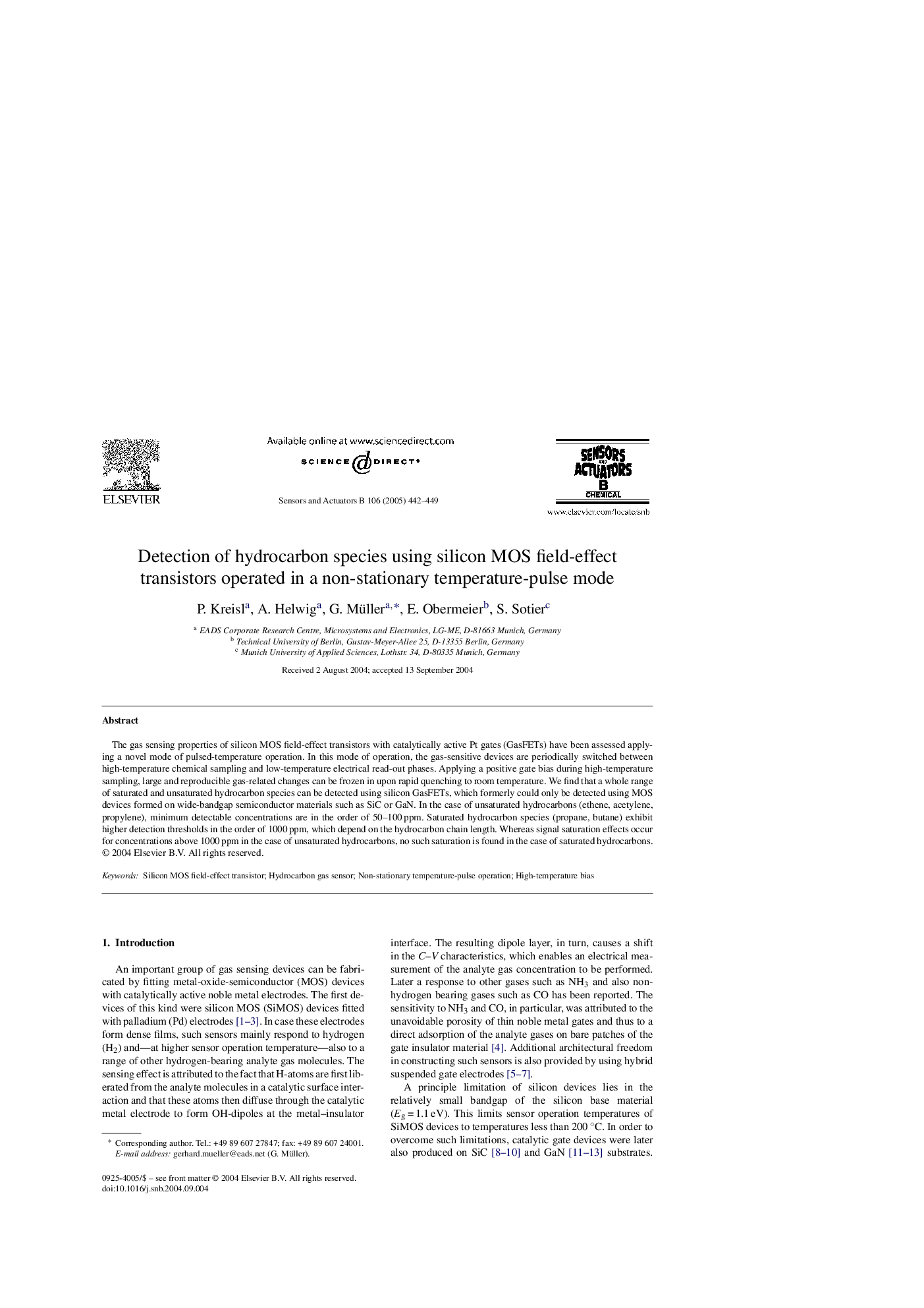| Article ID | Journal | Published Year | Pages | File Type |
|---|---|---|---|---|
| 10410454 | Sensors and Actuators B: Chemical | 2005 | 8 Pages |
Abstract
The gas sensing properties of silicon MOS field-effect transistors with catalytically active Pt gates (GasFETs) have been assessed applying a novel mode of pulsed-temperature operation. In this mode of operation, the gas-sensitive devices are periodically switched between high-temperature chemical sampling and low-temperature electrical read-out phases. Applying a positive gate bias during high-temperature sampling, large and reproducible gas-related changes can be frozen in upon rapid quenching to room temperature. We find that a whole range of saturated and unsaturated hydrocarbon species can be detected using silicon GasFETs, which formerly could only be detected using MOS devices formed on wide-bandgap semiconductor materials such as SiC or GaN. In the case of unsaturated hydrocarbons (ethene, acetylene, propylene), minimum detectable concentrations are in the order of 50-100Â ppm. Saturated hydrocarbon species (propane, butane) exhibit higher detection thresholds in the order of 1000Â ppm, which depend on the hydrocarbon chain length. Whereas signal saturation effects occur for concentrations above 1000Â ppm in the case of unsaturated hydrocarbons, no such saturation is found in the case of saturated hydrocarbons.
Keywords
Related Topics
Physical Sciences and Engineering
Chemistry
Analytical Chemistry
Authors
P. Kreisl, A. Helwig, G. Müller, E. Obermeier, S. Sotier,
